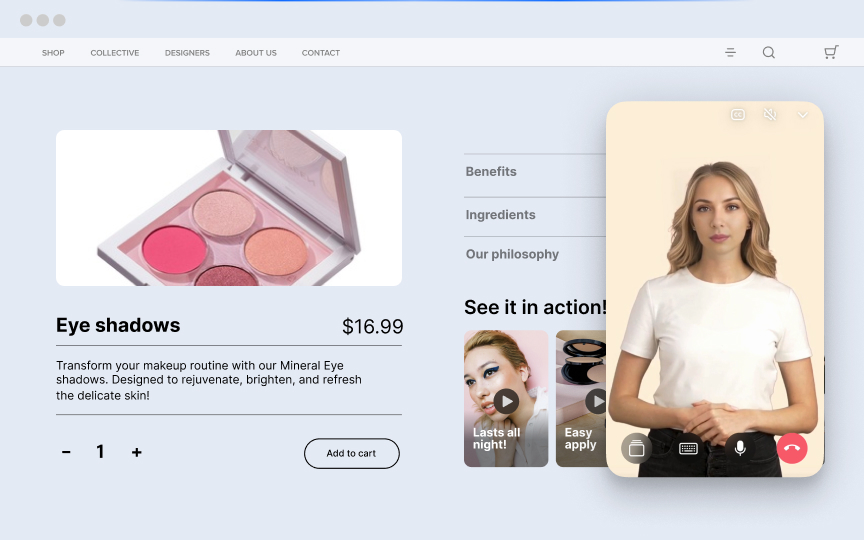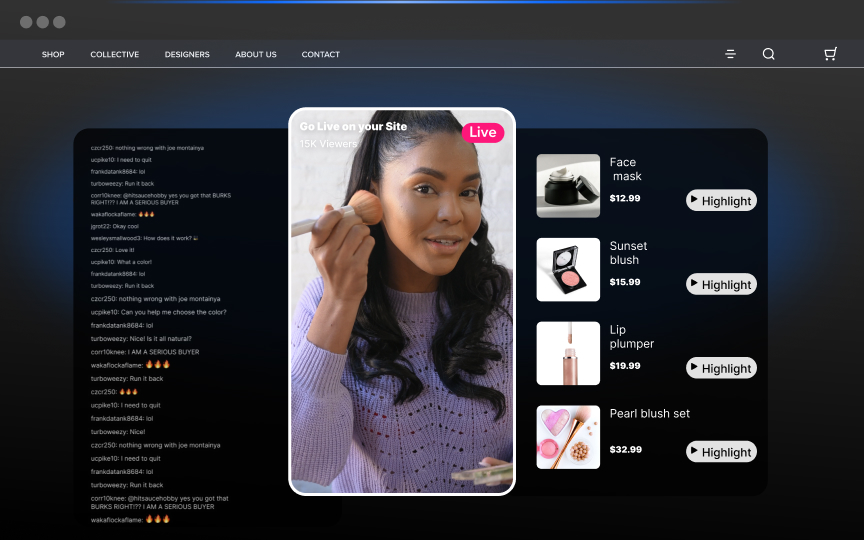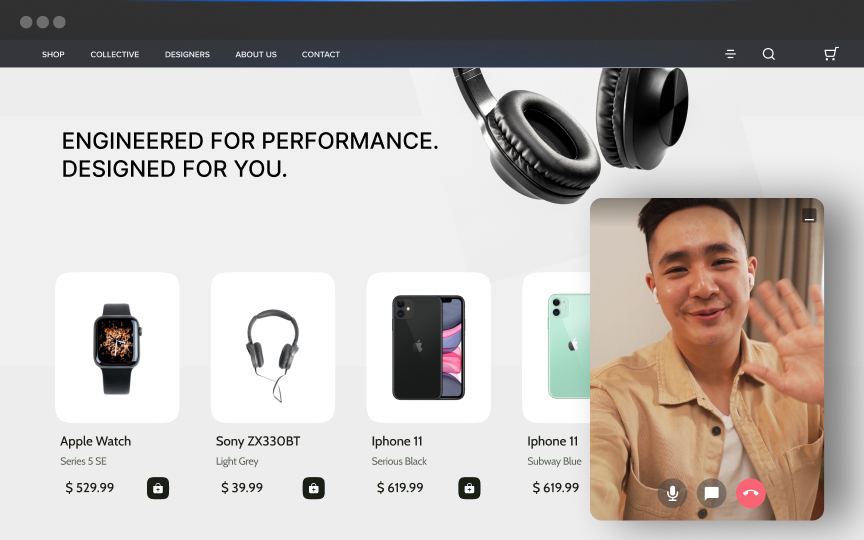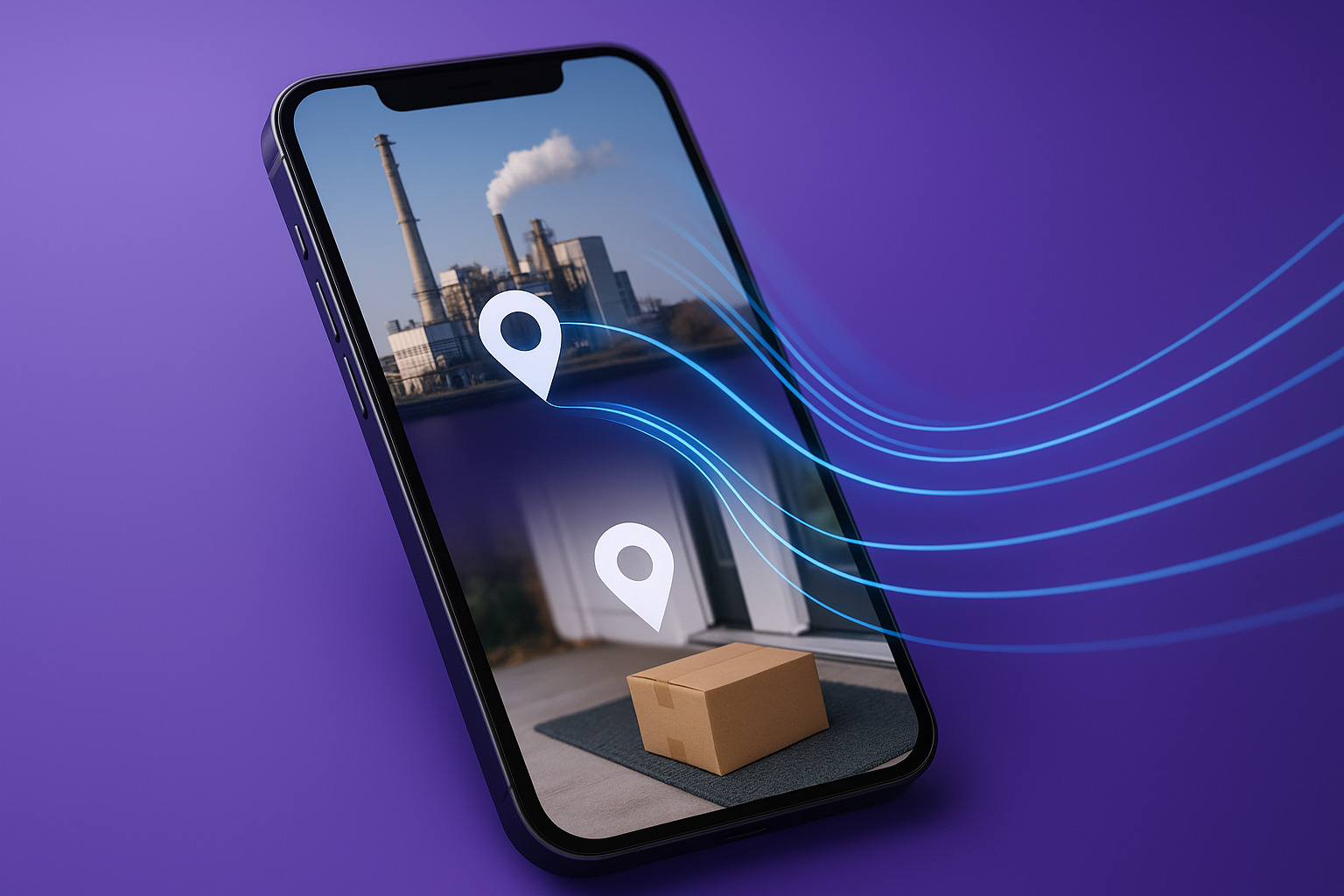What Is Mobile Commerce?
Mobile commerce, also known as m-commerce, refers to buying and selling goods and services through mobile devices like smartphones and tablets. This guide will discuss key features, its evolution over the years, and the benefits for businesses.
What Are The Key Features Of Mobile Commerce?
Mobile commerce leverages mobile-specific features to enhance the buying experience. One key feature is push notifications, which are alerts sent directly to users' phones about sales or new products.Another important feature is mobile payment options like Apple Pay and Google Wallet, allowing quick and secure transactions without the need for cash or credit cards. Integration with social media platforms is also common, enabling users to make purchases directly through apps like Instagram or Facebook.Lastly, location-based services offer personalized shopping experiences. For example, stores can send special offers to users' phones when they are nearby.
How Has Mobile Commerce Evolved Over The Years?
Mobile commerce began as simple versions of desktop e-commerce sites adapted for mobile screens. Over time, the development of dedicated mobile apps improved functionality and user experience.In the early 2010s, advancements in smartphones and mobile networks enabled faster browsing and more convenient shopping. Technologies like QR codes and NFC (Near Field Communication) further eased transactions. Mobile wallets started becoming popular, making payments faster and more secure.By 2024, mobile commerce had grown significantly. The rise of online business and improved app functionalities made mobile buying easy and efficient. Innovations like augmented reality (AR) are even allowing shoppers to virtually try products before they buy.
What Are The Benefits Of Mobile Commerce For Businesses?
Mobile commerce offers businesses several advantages. It provides a broader reach, as more people own mobile devices than ever before. This means businesses can connect with customers anytime and anywhere.Cost-efficiency is another benefit. Mobile storefronts often require less overhead compared to physical stores. Real-time analytics helps businesses understand customer behavior and adjust strategies quickly.Enhanced customer engagement is possible through personalized experiences and instant communication via push notifications or social media. Mobile ecommerce also allows for seamless integration with other technologies, like loyalty programs and mobile payment systems, further enhancing customer satisfaction.With these benefits, businesses can stay competitive and meet consumer demands effectively.
How Can Mobile Commerce Improve Online Store Metrics?
Mobile commerce can significantly enhance online store metrics by providing a better customer experience, streamlining the checkout process, and increasing sales through optimized mobile websites. It is important to track and optimize specific metrics to ensure a successful mobile-friendly experience.
What Metrics Should Be Tracked In Mobile Commerce?
Tracking key metrics is essential for understanding the performance of a mobile store. Important metrics include:
- Cart Abandonment Rate: The percentage of users who add items to their cart but do not complete the purchase.
- App Retention Rate: Measures how many users return to the app after their first visit.
- Average Order Value (AOV): The average amount spent per transaction.
Additionally, monitoring mobile commerce trends helps keep the store competitive. Knowing these metrics can guide improvements and highlight areas needing attention.
How Can You Optimize Your Mobile Store For Better Performance?
Optimization ensures that users have a seamless mobile shopping experience.First, use a mobile-friendly theme to make navigation easy. A responsive design adapts to different screen sizes, improving usability.Second, reduce load time by compressing images and minimizing code. Faster load times increase user satisfaction and can positively impact sales.Third, streamline the checkout process by reducing the number of steps and enabling mobile payment options. Simple, quick checkouts lower cart abandonment rates.Testing different elements such as buttons and layouts can also help in knowing what works best. Shopify offers guides on optimizing for mobile commerce growth.
What Are The Best Practices For Mobile Commerce?
Following best practices can lead to a successful mobile commerce strategy:
- Enhance Accessibility: Ensure the mobile site is easy to navigate for all users, including those with disabilities.
- Improve User Experience: Make the browsing and shopping experience seamless. Clear product descriptions and high-quality images can improve engagement.
- Use Interactive Elements: Features like swipeable product galleries and touch-friendly controls can make shopping more enjoyable.
- Invest in Mobile SEO: Optimize content for mobile search engines to drive organic traffic.
Implementing these best practices can not only improve the overall user experience but also elevate the store's performance metrics.
What Are The Best Mobile Commerce Strategies For Marketers?
Marketers can effectively reach consumers through various mobile commerce strategies. Utilizing influencer marketing, focusing on SEO, and maximizing social media can greatly enhance online shopping and selling experiences.
How Can Influencer Marketing Be Leveraged In Mobile Commerce?
Influencer marketing helps marketers tap into vast, engaged audiences on platforms like Instagram and TikTok. Influencers create authentic content showing the product in use, making it more relatable to potential buyers. This can drive significant traffic to mobile shopping sites.Marketers can collaborate with influencers by offering exclusive discounts and coupons, which can incentivize followers to purchase. Integrating social commerce through these collaborations also increases trust. By using targeted ads in influencer posts, brands can reach specific demographics. Explore influencer marketing strategies for more ideas.
What Role Does SEO Play In Mobile Commerce?
SEO is essential for mobile commerce because it ensures products and services appear high in search results. This visibility is crucial when consumers search for items on mobile devices. Optimizing for keywords related to the products, such as "discount mobile gadgets" or "online shopping deals," can attract more traffic.Mobile-friendly website design and fast loading times improve user experience and boost SEO rankings. Marketers should also focus on local SEO to capture nearby shoppers, enhancing engagement through reviews and ratings. Knowing how SEO impacts mobile commerce helps brands stay competitive.
How Can Social Media Marketing Enhance Mobile Commerce?
Social media marketing is vital in connecting with users on platforms like Facebook, Pinterest, and Twitter. Marketers can use these platforms to share engaging content, run ads, and offer live shopping events.By crafting visually appealing posts and stories, marketers can showcase products effectively. Social media also allows for direct interaction through comments and messages, fostering a stronger connection with consumers. Leveraging social media’s potential, such as utilizing TikTok's algorithm to increase reach, can significantly boost mobile commerce efforts. Enhancing social media marketing in mobile commerce can lead to increased sales and customer loyalty.
What Are The Most Common Challenges In Mobile Commerce?
Mobile commerce faces several challenges, including security and technical issues, as well as building customer trust. These challenges can impede the smooth functioning of mobile commerce if not addressed properly.
How Can Security Concerns Be Addressed In Mobile Commerce?
Security is a significant concern in mobile commerce due to the risk of data breaches and online fraud. Implementing strong encryption methods, such as Secure Sockets Layer (SSL), can help protect sensitive customer information during an online transaction.Using two-factor authentication and biometric verification can further enhance security. Regular updates to the app and backend systems can patch vulnerabilities and prevent unauthorized access.Key security measures:
- SSL encryption for data protection
- Two-factor authentication for secure access
- Biometric verification to ensure identity
It's crucial for businesses to communicate these security measures to their customers, reassuring them about the safety of making online purchases.
What Are The Technical Challenges In Implementing Mobile Commerce?
Technical challenges in mobile commerce include ensuring compatibility across different devices and operating systems. Developing an app that works seamlessly on both Android and iOS is essential, but can be complex and time-consuming.Speed and performance are other critical issues. Mobile apps must load quickly and function smoothly to provide a good user experience. Poor performance can lead to app abandonment.Key technical aspects:
- Cross-platform compatibility to reach a broader audience
- Fast loading times for better user experience
- Regular updates to keep the app running smoothly
Developers should also consider integrating features like one-click ordering and secure payment gateways to simplify the purchasing process for users.
How Can Customer Trust Be Built In Mobile Commerce?
Building customer trust is crucial for the success of mobile commerce. Clearly displaying privacy policies and using reputable payment methods can help gain customer confidence.Customer reviews and ratings can also play a key role. Allowing users to leave feedback and displaying positive reviews can increase trust. Transparency in business practices, such as easy return policies and customer support, is essential.
Strategies to build trust:
- Clear privacy policies to reassure customers
- Reputable payment methods to ensure secure transactions
- Customer reviews to build credibility
Businesses must prioritize these strategies to establish trust and encourage customers to complete their online purchases.
How Can Mobile Commerce Tools And Technologies Aid Your Business?
Mobile commerce is revolutionizing the way businesses operate by providing tools and technologies that simplify transactions, improve customer experiences, and boost sales. These tools include payment systems, mobile apps, and innovative features such as augmented reality and push notifications.
What Are The Most Effective Mobile Commerce Tools?
Effective mobile commerce tools can greatly enhance a business's ability to serve customers. Mobile payment systems such as Apple Pay and Samsung Pay enable quick, secure transactions. Mobile wallets like Venmo provide added convenience and speed. PWA (Progressive Web Apps) offer robust app-like experiences without requiring a download.QR codes are essential for seamless payment processes, allowing users to make purchases by simply scanning a code. Location-based services help businesses send targeted promotions to potential customers nearby, increasing foot traffic and sales. Push notifications keep customers informed about sales and new products, driving engagement.
How Do Mobile Payment Systems Work?
Mobile payment systems use technologies like NFC (Near Field Communication) to enable contactless payments. Customers simply tap their phone on a compatible terminal to complete a transaction. This method is widely used in retailers and quick-service restaurants.Digital wallets store card information securely, so users don’t have to carry physical cards. Security measures like encryption and biometric authentication (fingerprints, facial recognition) ensure that transactions are safe. Options such as one-click ordering streamline the purchase process, making it more convenient for users.Mobile banking apps also facilitate quick transfers and payments, increasing the efficiency of financial transactions. With these systems, customers can manage their finances on the go, providing businesses with faster payment options.
What Role Do Apps Play In Mobile Commerce?
Apps are crucial for mobile commerce, offering a seamless shopping experience. Mobile shopping apps allow users to browse, compare, and purchase products directly from their devices. Retailers benefit from features like augmented reality, which lets customers visualize products in their homes before purchasing.Push notifications within apps remind users of abandoned carts, new arrivals, and promotions, increasing conversion rates. Location-based services can prompt customers with deals as they enter a store or are near one, driving foot traffic.For businesses, app-based solutions such as one-click ordering and app-based shopping streamline operations and reduce the time it takes to complete a sale. Highly customizable, these apps can integrate AI technologies to personalize user experiences and recommend products, boosting sales and customer satisfaction.
How To Measure Success In Mobile Commerce?
Understanding success in mobile commerce involves tracking KPIs, using analytics to gain insights, and utilizing the best tools available. This ensures an optimal omnichannel experience and valuable insights into consumer behavior.
What Key Performance Indicators (KPIs) Are Essential?
Key Performance Indicators (KPIs) are crucial for assessing mobile commerce success. Conversion rate highlights the percentage of visitors who make a purchase. A high conversion rate indicates effective lead generation and sales strategies.Average order value (AOV) measures the average amount spent per transaction. Increasing AOV can signify effective upselling and cross-selling strategies.Customer retention rate shows the percentage of repeat customers, which is vital for long-term success. High retention indicates customer satisfaction and loyalty.Cart abandonment rate needs monitoring, as high rates can signal issues with the checkout process. Finally, mobile traffic and engagement metrics such as session duration and page views provide insights into user behavior and content effectiveness.
How Can Analytics Be Utilized To Understand Mobile Commerce Performance?
Analytics tools offer a comprehensive view of mobile commerce performance. Platforms like Google Analytics reveal detailed statistics about mobile traffic, user behavior, and demographics. With omnichannel analytics, businesses understand how customers navigate across different devices and platforms, enhancing the omnichannel experience.Zero-party data, collected directly from customers, provides personalized insights without privacy concerns. Analyzing this data helps in offering personalized recommendations that boost engagement and sales. Heatmaps identify areas where users spend the most time, suggesting which parts of the site drive the most interest and conversions.Custom dashboards and reports are useful for monitoring KPIs and other essential metrics. Advanced tools can also track real-time performance, helping to make quick, data-driven decisions.
What Are The Best Tools For Tracking Mobile Commerce Success?
Several tools specialize in tracking mobile commerce performance. Google Analytics is a powerful and widely-used tool that offers extensive features for mobile analytics. It tracks user behavior, session duration, and conversion rates, providing a deep understanding of the customer journey.Mixpanel is another valuable tool, offering advanced analysis of user interactions and enabling businesses to create customized reports. For insights into shopping behavior, tools like Hotjar utilize heatmaps and session recordings to visualize user interactions on mobile sites.Salesforce Commerce Cloud provides an integrated solution for tracking sales, customer data, and analytics. It also supports omnichannel sales strategies, ensuring a seamless omnichannel customer experience.Using these tools, businesses can measure success accurately, adapt strategies, and ensure continued growth. Read more about mobile commerce trends for 2024 for additional insights.
Frequently Asked Questions
Mobile commerce has seen rapid growth due to technological advancements and changes in consumer behavior. Businesses benefit from increased reach and efficiency, while cybersecurity remains crucial.
How has mobile commerce evolved in recent years?
Mobile commerce, also known as m-commerce, has expanded significantly. Initial growth surged during the COVID-19 pandemic. Rising smartphone usage and faster internet speeds have made it easier for consumers to shop on their mobile devices.
What are the primary benefits of using mobile commerce for businesses?
Businesses can reach a wider audience by offering mobile-friendly shopping options. Mobile commerce also allows for personalized marketing, which can increase customer engagement and sales. Additionally, it provides a streamlined shopping experience, making it convenient for customers to make purchases.
Which technologies are driving the growth of mobile commerce?
Key technologies include mobile-optimized websites, shopping apps, and digital wallets. Voice search and VR/AR are also becoming increasingly important. These advancements help create a seamless user experience tailored to mobile devices, as seen on StoreLab's ultimate guide.
What strategies can businesses use to enhance their mobile commerce platform?
Businesses should focus on user-friendly interfaces, fast loading times, and secure payment options. Implementing features like push notifications and chat support can also improve customer interaction. Optimizing for mobile SEO ensures that their platform is easily discoverable by potential customers.
How does mobile commerce affect customer behavior?
Customers are now more likely to shop on their mobile devices due to convenience and the ability to compare prices quickly. Mobile commerce allows for more impulse buys and provides opportunities for businesses to engage with customers through targeted promotions and notifications.
What security measures are essential for safeguarding mobile commerce transactions?
Essential security measures include encrypting communication between the user and the server, using secure payment gateways, and employing multi-factor authentication. Regularly updating the platform to address potential vulnerabilities is also crucial. Businesses should inform customers about the steps they are taking to protect their data.
Unlock Exclusive Insights
By submitting this form, you agree to Firework's privacy policy and consent to receive personalized marketing communications. You can unsubscribe at any time.

























.jpeg)





